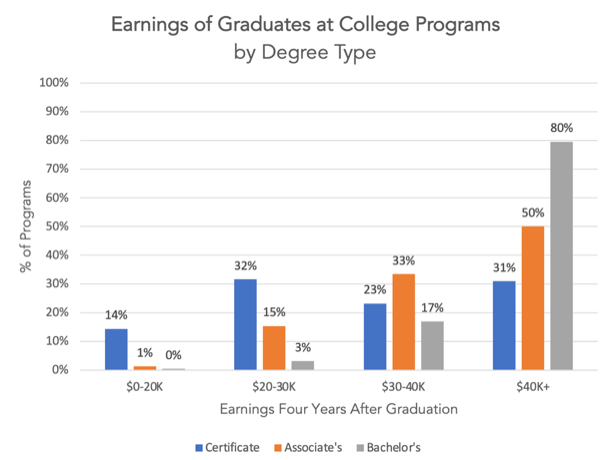Which College Majors Are Worth It?
May 2, 2023
By Michael Itzkowitz
The number one reason why students attend college is for greater employability and to obtain a financially secure future. Oftentimes, the major you choose matters more than the college you attend. In our newest data download, you can check out how much students earn after graduating from over 36,000 undergraduate college programs across the US.
On April 25, 2023, the US Department of Education released new data on how much graduates earn within a few years after earning their degree. And, luckily for you, I’ve run some analysis to help you interpret that data and provided a downloadable spreadsheet, so that you can check out all the majors—at all of the colleges—for yourself.
Cost should definitely be factored in, as well, when deciding on which college to attend or major to focus on. That said, knowing what kind of return you’ll get on your college investment is critical to ensuring that the time and money spent on college will be worth it.
How much are students earning?
Here’s the good news. If you graduate from a college program, it’s most likely going to be one that allows you to earn reasonable early career salary.
For example, out of the 36,096 programs with earnings data available, 23,588 (nearly two-thirds) show the majority of their graduates earning at least $40,000 within four years of graduating. Yet, there are still many that show substantially lower earnings for their graduates. Nearly 5,000 (4,723) college programs show the majority of graduates earning less than $30,000—1,010 of those showing their alumni earning less than $20,000. With time and money spent, these programs will undoubtably leave students experiencing financial strain, providing limited to no economic return whatsoever.
Degree type matters
While we sometimes assume quicker equals better, this doesn’t always apply to college credentials. Institutions offer various levels of awards, including certificates, associate’s degrees, and bachelor’s degrees. Yet, the likelihood of higher earnings is much more prominent at the associate’s and bachelor’s degree level.[i]
For example, approximately 97% of bachelor’s degree programs show the majority of their graduates earning at least $30,000 per year —a strong assurance that their earning trajectory will be steeper than someone with a high school diploma, but no college experience. Over eight out of 10 (83%) associate’s degrees lead to the same result. And, while short-term certificates can offer one of the quickest paths to economic mobility, they are also the riskiest postsecondary option, as many fail to provide any economic premium whatsoever. Almost half (46%) show most of their graduates failing to earn more than a $30,000 annual salary, even four years after they’ve completed their studies.
Final thoughts
As one of the biggest investments a student or family will ever make, it’s important that they enter a college program with an informed idea of how much they will pay and what kind of earnings potential they will obtain. Beyond personal responsibility, the government has a role to play here, as well. Each year, it doles out over $110 billion in taxpayer subsidies through the form of federal grants and loans that students use in an effort to further their education and better their lives. It’s critical that policymakers ensure that students will get the return they expect—and deserve—when spending their time and money on a postsecondary credential. These data help inform that conversation, as they provide a strong indication of which programs are worthy of that investment and which ones are not.
[i] Within the earnings data, there are data on 22,404 bachelor’s degree programs, 8,071 associate’s degree programs, and 5,621 certificate programs. Smaller programs are often privacy suppressed through the US Department of Education, which is most likely to limit data on shorter-term programs, as they often exhibit smaller enrollment

